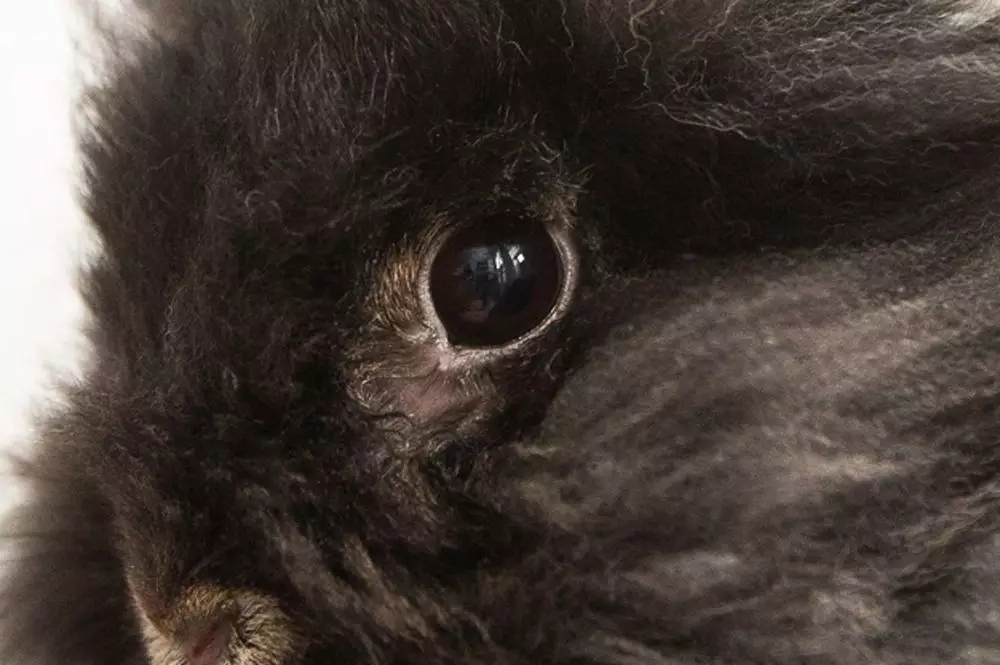Rabbits, with their gentle demeanor and fluffy appearance, often captivate our hearts. However, beneath their adorable exterior lies a unique physiological design that influences their health, particularly their vision. While their prominent eyes grant enhanced peripheral vision, this anatomical structure also predisposes them to various eye-related ailments. This article aims to shed light on the complexities of a rabbit’s ocular health, exploring common issues, symptoms, and preventive strategies.
The Marvel of Rabbit Eyesight
Rabbits possess remarkably large eyes positioned laterally on their heads, an evolutionary adaptation that offers a substantial field of vision. This anatomical feature allows them to detect potential predators from a distance, thereby increasing their chances of survival in the wild. However, large eyes also mean that rabbits suffer from certain vulnerabilities. Despite the advantages that come with their eye placement, the inherent blind spot directly in front of their snouts can make them susceptible to hazards that approach head-on.
Moreover, rabbits are generally hypersensitive to close objects due to their structural eye limitations, often leading to greater occurrences of eye injuries. In domesticated settings, common household items or even fellow pets can pose unseen perils to these beloved creatures.
Common Eye Ailments in Rabbits
Rabbits are prone to a variety of eye complications, some of which can escalate into serious conditions if left unaddressed. One of the most prevalent eye issues is the presence of foreign bodies, such as stray pieces of bedding or food particles, that can easily lodge themselves in a rabbit’s expansive eye. This can create discomfort and potentially lead to infections or corneal damage. A corneal ulcer is one potential consequence, resulting in acute pain for the rabbit.
Signs of distress include squinting or pawing at the eye, which should never be overlooked, as they often indicate significant discomfort or potential injury. Another common condition is conjunctivitis, or “pink eye,” which can arise from unsanitary living conditions that encourage bacterial growth. This inflammation can manifest as redness, swelling, and discharge, prompting immediate veterinary intervention.
More severe afflictions include proptosis, where the eye may pop out of its socket due to trauma, and iris prolapse, characterized by a part of the iris pushing through the cornea. While these may not be everyday occurrences, their severity necessitates urgent care.
Diagnosis and Prompt Treatment
Immediate diagnosis and prompt treatment are paramount when it comes to any ocular issues affecting a rabbit’s eyesight. Veterinary assistance is crucial as many eye conditions can quickly worsen. Treatment varies according to the nature and severity of the condition; for infections, antibiotics specifically tailored for rabbits are essential since their physiology differs vastly from other pets.
In cases of foreign objects lodged in the eye, it’s critical to approach the removal with care. Some cases may require anesthesia to allow the veterinarian to safely extract the irritant without causing additional stress to the animal. If an abscess forms due to an underlying injury, a vet may perform a minor surgical procedure to drain the infected area, followed by a course of antibiotics.
The diagnosis process often involves specialized staining techniques that can reveal ulcers or other issues, guiding effective treatment plans. Continuous monitoring of any diagnosed conditions is vital to ensure that they improve and do not escalate into more serious health problems.
Preventive Measures for Optimal Eye Health
While it may not be possible to prevent all eye conditions, there are numerous steps caretakers can take to enhance their rabbit’s ocular health. Maintaining a pristine living environment can significantly reduce the likelihood of infections. Regularly cleaning cages and providing fresh water can help minimize bacterial threats.
Furthermore, attentive observation of a rabbit’s behavior is essential. If you notice signs of discomfort such as excessive eye-rubbing or reluctance to open their eyes, it’s important to consult with a veterinarian immediately. When allowing rabbits to explore or play, be mindful of potential hazards, ensuring that no sharp or protruding objects pose a risk to their sensitive eyes.
Understanding the complexities of rabbit eye health is critical for any rabbit owner. By being proactive, vigilant, and informed, we can create a safer environment that promotes the well-being of these charming companions. Whether through regular veterinary check-ups or maintaining cleanliness in their surroundings, every step taken can significantly impact their overall health and happiness.

